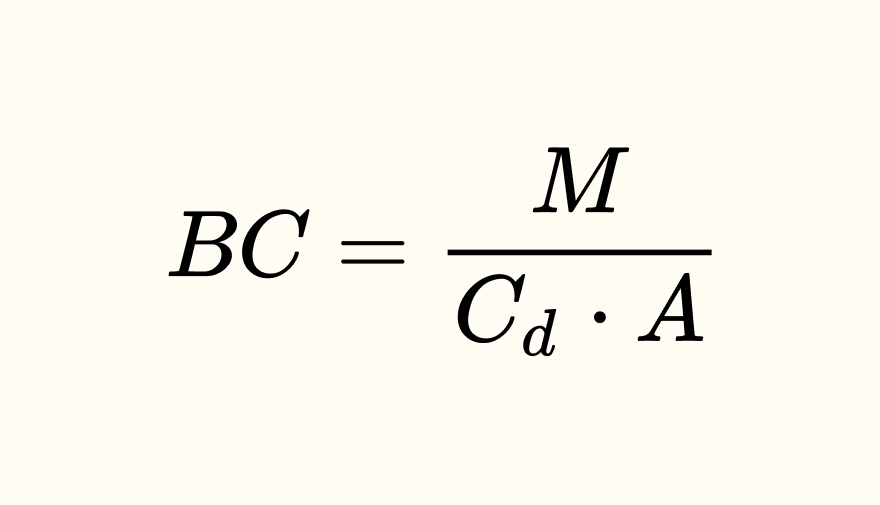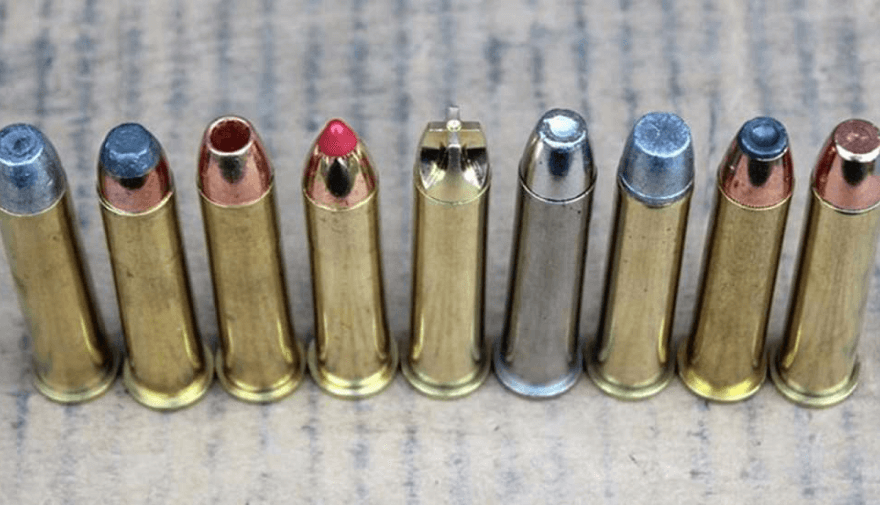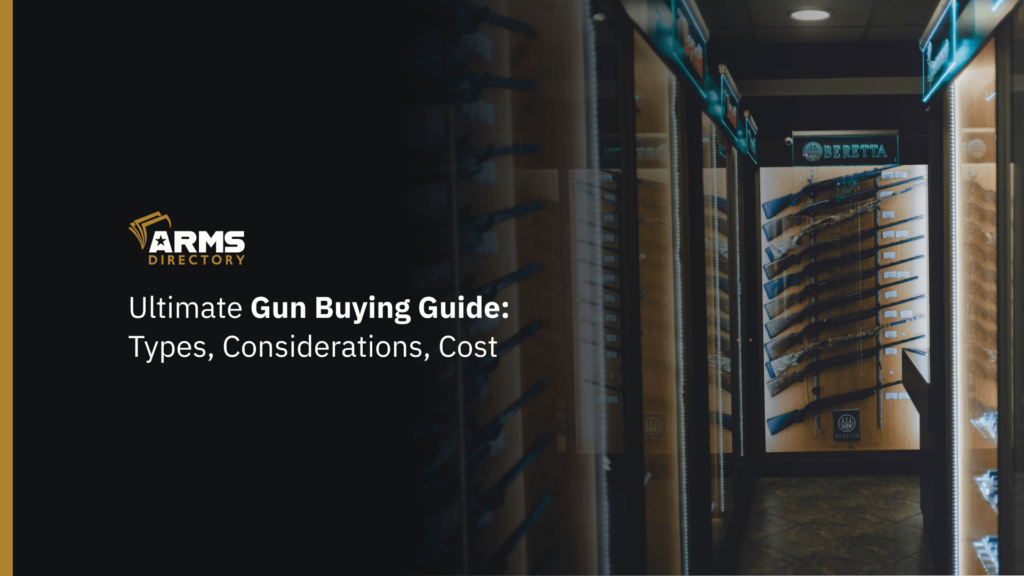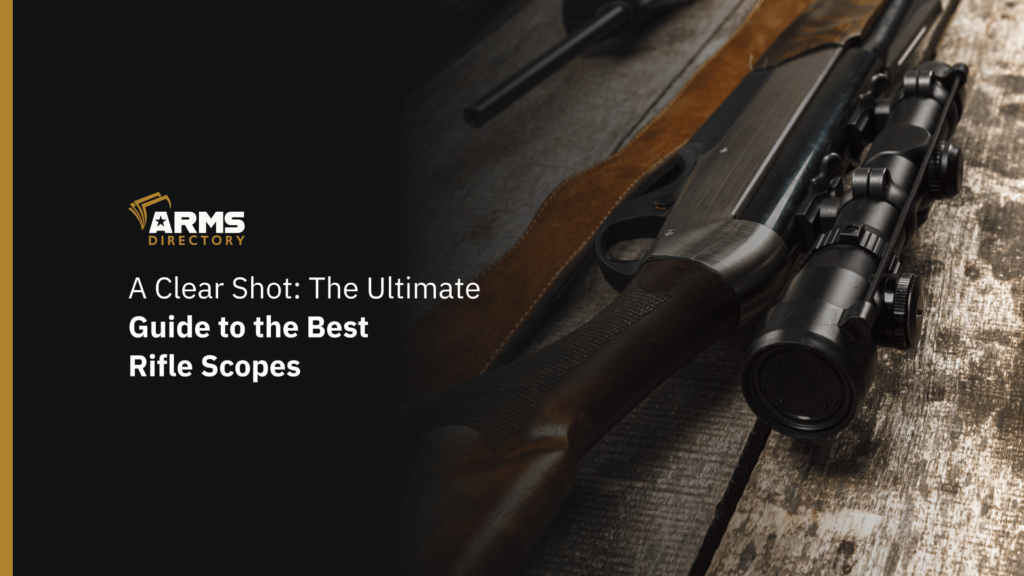![What Is Ballistic Coefficient [Beginner-Friendly Guide]](https://vault.armsdirectory.com/wp-content/uploads/2023/10/27083016/What-Is-Ballistic-Coefficient_-Beginner-Friendly-Guide-1024x576.png)
What Is Ballistic Coefficient? [Beginner-Friendly Guide]
Chances are, if you have spent time around long-range shooters, you have heard them use the terms ‘ballistics’ and ‘ballistic coefficient’.
But what does that mean? Is it something that you should know if you want to become a better shooter? Does it matter when you are choosing a firearm and ammunition?
Stay with us.
Together, we will find out what a ballistic coefficient is, and go over all the basic information you need to know.
What Is the Ballistic Coefficient?
The ballistic coefficient (BC) is the ability of an object to overcome air resistance in flight. Imagine it like this: you are trying to shoot a bottle that is set 500 meters from you.
In order to be able to successfully reach it, you need to know the angle and range for a shot, so you can determine what type of bullet to use.
To do this, you would need to pick a bullet with the correct ballistic coefficient. However, another important factor you need to consider is the bullet drag.
Ballistic Coefficient vs. Drag Coefficient
The main difference between ballistic coefficient (BC) and drag coefficient (DC) is that the first uses the mass of the bullet to determine its velocity, during flight. The latter is about the resisting force of said bullet, as it moves through the air.
For example, if you compare a small and a big vehicle, the smaller one will be able to reach 100 mph faster than the bigger one, since it will have a lesser drag coefficient. It will also be able to slow down to 50 mph faster, meaning it has a higher ballistic coefficient.
Ballistic Coefficient Formula
In essence, the ballistic coefficient formula is:

BC is the ballistic coefficient, M is the mass, Cd is the drag coefficient, and A is the cross-sectional area.
At this point, you might be thinking that calculating ballistic coefficient is very hard, and requires a degree in physics. Well, luckily, there are online ballistic coefficient calculators you can use to make the process more convenient.
This calculator, for instance, only requires you to enter the bullet weight, diameter, and select the shape. Then it will automatically calculate the bullet coefficient.
Related Post: What Is the Best Handgun for Beginners, Pros & Self-Defense?
What Is a Good Ballistic Coefficient?
Overall, a good ballistic coefficient refers to a measure of how well a projectile can overcome air resistance while maintaining its velocity. A higher ballistic coefficient is generally preferable, as it suggests greater aerodynamic effectiveness and permits the projectile to travel further with fewer deviations from its intended course due to atmospheric elements.
There are a couple of components to consider, when defining what a good ballistic coefficient should be.
First, you have the weight of the bullet, usually measured in grains. Intact bullets typically follow a predetermined weight, based on the cartridge type. For instance, a .22 short is around 27–30 grains, a .32 S&W is between 85-88, and so on.
Next, there is the diameter of the bullet. Bullet calibers are typically measured in millimeters (mm). Last, but not least, there is the shape of the bullet. Please note that the following Ballistic Coefficient modifiers are based on the Roundnose, which has a modifier value of 1.
The most common bullet shapes are:
- Boattail. This bullet shape is quite air-resistant. The boattail spitzer is number one, with a BC modifier of 1.965.
- Spitzer. Also known as a spire point bullet, this is a very aerodynamic bullet shape that has a ballistic coefficient modifier of 1.642, making it the second best of the list.
- Hollow point. This shape, having a small, hollow cavity, expands to increase the surface area of the projectile on impact. With a ballistic coefficient of .875, it is the least aerodynamic in the list.
- Boattail hollow point. This type combines the aerodynamics of the boattail with the expansion of the hollow point. The BC modifier is 1.6, which is much better than the hollow point, yet not as high as the boattail spitzer.
- Roundnose. As the name suggests, this bullet shape has a round nose. A classic round, it has a BC modifier of 1, very stable and reliable.

Additionally, common bullet projectile types have been standardized as follows:
- G1. This is the most common type of bullet also known as Ingalls. These projectiles are flatbased bullets with 2 caliber noses.
- G2. Bullets within the G2 range are Aberdeen J projectiles.
- G5. These are short 7.5 degree boat-tail bullets, with 6.19 caliber long tangent ogive.
- G6. These are flat-base bullets with a six-caliber sear.
- G7. G7 BC bullets are known for their exceptionally low drag. They have long 7.5 degree boat-tails and a 10 caliber tangent ogive.
- G8. Flat-base G8s have a 10-caliber secant ogive.
- GL. GL projectiles are blunt lead noses.
Keep in mind that the most commonly used by manufacturers are types G1 and G7 ballistic coefficient bullets.
Related Post: Outrageous Gun Myths That Really Need To Die – Arms Directory
Why Is It Important to Know the Ballistic Coefficient of Your Weapon?
From all we have said so far, there comes the ultimate question: why do you need to care about the ballistic coefficient of your weapon? Does it help you in any way, or is it just something for scientists and gun manufacturers?
Well, the truth is that knowing the ballistic coefficient of your weapon could help you accurately predict the trajectory and performance of your ammunition.
This information allows you to make precise adjustments for factors such as wind, distance, and elevation, which will ultimately improve your accuracy and effectiveness as a shooter.
Additionally, understanding the ballistic coefficient can help select the most suitable ammunition which not only ensures optimal performance but maximizes the potential of your weapon.
This is especially important when it comes to shooting at a target that is over 600 yards away.
Related Post: The Ultimate Shooting Accessories for Every Weapon [A 2023 Beginners Guide] – Arms Directory
Over to You
Did we help you understand what a ballistic coefficient is? If so, feel free to check out our other blog posts, and take a look at our business directory.
Of course, ballistics is a very complex, and deep topic, so in case you have any additional questions, do not hesitate to drop us a line in the comment section below.



![The Right Way to Buy and Sell Firearms Online [Guide]](https://vault.armsdirectory.com/wp-content/uploads/2023/10/20050323/The-Right-Way-to-Buy-and-Sell-Firearms-Online-Guide-1-1024x576.png)
![The Ultimate Shooting Accessories for Every Weapon [A 2023 Beginners Guide]](https://vault.armsdirectory.com/wp-content/uploads/2023/08/30071223/The-Ultimate-Shooting-Accessories-for-Every-Weapon-A-2023-Beginners-Guide-1024x576.png)
![Gun Registration Requirements by State [What You Need to Know]](https://vault.armsdirectory.com/wp-content/uploads/2023/10/27073220/Gun-Registration-Requirements-by-State-What-You-Need-to-Know-1024x576.png)
